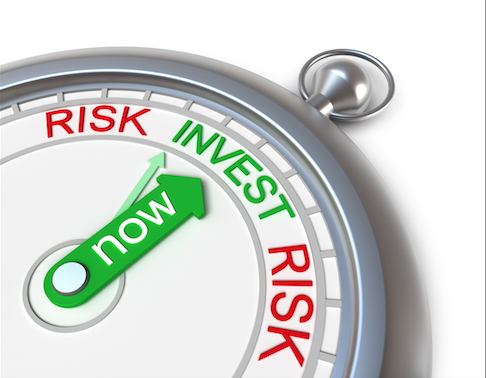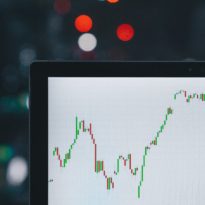Darius McDermott, managing director, FundCalibre
“Why take the extra risk in high yield bonds when you can get such good yields on government or investment grade bonds?”
That’s the stick detractors are hitting the high yield bond market with at the moment, particularly with recession and rising default rates on the horizon.
After a decade of dearth in the fixed income markets, a 3 per cent rise in rates in both the government and investment grade sector has made many investors weak at the knees* – despite the challenging inflationary backdrop. The UK 2 Year Gilt now stands at over 3.7 per cent, having been just 1.2 per cent 12 months earlier**.
Rising inflation, aggressive rate hikes and Russia’s invasion of Ukraine were the preeminent market themes in 2022, with high yield bonds falling some 10 per cent as a result*. But we have to remind ourselves that volatility also brings opportunities. There is an expectation that central bank policy will normalise in 2023, with inflation finally coming under control – meaning those active managers with the skills to navigate the uncertainty have a real opportunity to cash in.
Reasons for optimism
You could argue the challenges around high yield bonds are tied into the negativity seen in 2022, with markets having to adjust to the changing regime. Artemis Global High Yield Bond co-manager David Ennett says there may be a recency bias towards the last couple of recessions which could be affecting the high yield market.
He says the market has become accustomed to fast/painful recessions and forgotten about plain vanilla, Fed-induced recessions – designed to stop economies overheating. These recessions tend to be milder and less pronounced***.
History also shows us that global high yield bonds have outperformed the last two times the Fed hiked rates (2004-2006 and 2015-2018). Both times, historical annualised returns from global high yield bonds were in excess of 7 per cent – well above other parts of the fixed income universe****.
Default will rise – but not as we know it
I want to be clear that defaults have to rise from the lows we are currently seeing. Rating agency Moody’s expect the global high yield default rate to almost double from 2.6 to 4.9 per cent between November 2022 and November 2023^.
However, this will vary sector by sector, while the credit quality of the high yield sector has also matured, giving investors greater scope to avoid defaults. For example, the share of the highest quality high yield bonds (BB) now accounts for 58 per cent of the market (it was only 40 per cent at the start of 2008); by contrast the proportion of CCC’s – the riskiest part of the market – has halved from 17 to 9 per cent^^.
Why does this matter? Research from S&P found that between 1981-2021 the average chance each year of a default for CCC bonds was around 25 per cent, while for BB it was just 0.6 per cent^^.
The active opportunity is again highlighted by the differentiated earning opportunities between cyclical and non-cyclical names. Aviva’s global co-head of high yield Sunita Kara says companies in most sectors will face stern tests over the coming months. However, it is consumer cyclical companies which are likely to be the hardest hit.
She says: “Companies in the retail and leisure industries are facing higher labour costs as well as earnings uncertainty, while cyclical advertising businesses, such as those in the media sector, are also coming under pressure.
“Non-discretionary parts of the market, like healthcare and consumer staples, look to be comparatively well placed. While energy companies should continue to benefit from high commodity prices.”
There is a strong chance that central banks push us into recession at some point – causing defaults to rise and high yield spreads to widen significantly. The challenge is clear, but so is the opportunity for active managers to find incredible opportunities to secure large single digit yields from companies.
Experienced stock picker
Defaults may rise but an excellent stock picker is worth their weight in gold. Man GLG High Yield Opportunities manager Mike Scott’s record in this respect in the high yield bond market is second to none. The fund’s distribution yield is currently 5.99 per cent^^^.
Higher yields in under researched areas
Artemis Global High Yield Bond managers take advantage of the inefficiencies created by many of their peers focusing heavily on the larger players in the index. Their bottom-up approach of focusing further down the index has allowed them to consistently find hidden gems with a strong upside, helping them to outperform. The distribution yield on the fund is currently 6.5 per cent^^^.
Strategic bonds
Those who might not want a full-blooded approach to high yield bonds may prefer a strategic bond fund like TwentyFour Dynamic Bond or Aegon Strategic Bond funds, both of which have reasonable allocations to high yield in their portfolios^^^. The current distribution yield of each fund is 5.97 per cent and 4.53 per cent respectively^^^.
Pros
- High single digit yields on offer
- High yield tends to be shorter duration – this, added to the higher starting coupon, makes it less exposed to rises in interest rates
- Economies are looking robust – strong nominal economic growth is supporting a lot of high yield businesses.
Cons
- Spreads are not that high over government bonds given the potential risks of a recession
- Defaults are set to rise
- Higher yields are going to put more pressure on businesses and make it harder to refinance
*Source: Bloomberg, 31 December 2022
**Source: MarketWatch
***Source: Artemis Fund Managers: Getting into high yield before the uncertainty clears
****Source: Bloomberg, ICE BofA, 14 April 2021. The 2004-2006 hiking cycle data is from 28 June 2004 to 29 June 2006 and the 2015-2018 hiking cycle data is from 14 December 2015 to 19 December 2018.
^Source: Aviva – Focus on the fundamentals – The Outlook for High Yield in 2023
^^Source: Artemis: High Yield: A healthier position for long-term returns
Past performance is not a reliable guide to future returns. You may not get back the amount originally invested, and tax rules can change over time. Darius’s views are his own and do not constitute financial advice.

































